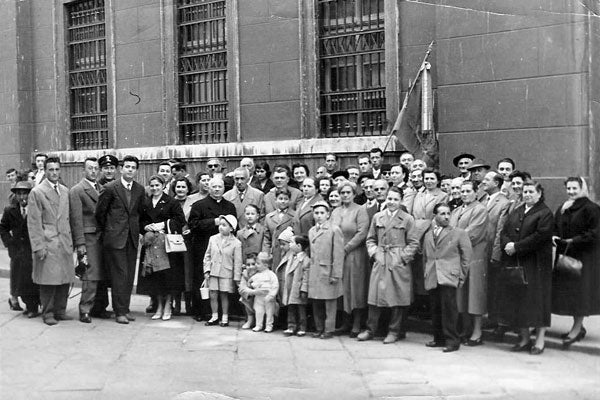
Plight of Syrian refugees echoes experience of Italians who fled 70 years ago
Published: December 11, 2015
As thousands of Syrian refugees flee a savage civil war for the safety of Canada, their plight resonates with a diaspora of Italian immigrants whose community is the focus of a unique University of Toronto graduate course.
Seventy years ago, Italian refugees began fleeing a wave of “ethnic cleansing” in an area of the Istria peninsula today shared by Croatia and Slovenia.
The estimated 25,000 who eventually came to Canada brought stories of civilians tied together along the edge of deep mountain crevices as Yugoslav communist partisans shot every second person, so the living fell with the dead, says Konrad Eisenbichler of the Faculty of Arts & Science, who teaches the Italian Studies course, The Giuliano-Dalmata Diaspora in Canada.
“It’s the same thing as Syria today, where people are fleeing a country at war, fleeing for their lives, and it includes everyone from doctors to farmers,” says Eisenbichler, whose family fled Istria when he was a child.
“In many ways, it echoes what happened in the 1940s. Within our community there is a very strong empathy with today’s refugees from Syria and the Middle East. We see these images on television, and it echoes what we went through.”
Read more about Eisenbichler
While he didn’t plan it that way, the course he launched this year proved very timely, allowing his students to draw connections to the public debate around the potential risks and rewards of admitting Syrian refugees.
“All the negativity around the Syrian refugee crisis really bothers me,” says Jenna Noel, a master’s student in Italian Studies.
“I understand some people are afraid of ‘criminals’ being let in, but over the years, we’ve brought many refugees here who contributed to Canada and made it a better place.”
Read more about the refugee crisis
The exodus from Istria has been estimated at 350,000, or approximately 90 per cent of the region’s predominantly Italian population. Those who made it to Canada came in three waves during the 1940s and 1950s, and included current Fiat Chrysler CEO Sergio Marchionne, MAC Cosmetics co-founder Frank Toskan, renowned graphic artist, the late Vittorio Fiorucci, and Eisenbichler himself, a member of the Royal Society of Canada who has been knighted by the president of Italy.
As part of the course, Eisenbichler had survivors of the Istria exodus speak to his class, and then let each student choose a person to interview and write a narrative about their experiences.
“When I listened to them, I walked into a real and living history,” says Italian Studies master’s student Mishunxin Wang. “I felt the overwhelming power of empathy, and the responsibility to become the carrier of their memories.”
During the Second World War, Italians, Germans, and Japanese in Canada were rounded up and forced into internment camps. One of them, Mario Duliani from Istria, wrote a novel about his ordeal that became part of the course readings.
Refugees who arrived after the war faced barriers such as language and culture shock. As mandated by Canadian immigration policy at the time, many served compulsory labour assignments, like working in logging camps in northern Ontario for the first two years after they arrived.
As political refugees, there was no going “home” for them to what had become a foreign country under Yugoslavian control.
Like the Syrian refugees today, they were victims of “politicians using a crisis for their own purposes,” says Elisabetta Carraro, an international PhD student in Italian Studies.
(See the original of the top photo at Wikimedia Commons)
Peter Boisseau is a writer with the Faculty of Arts & Science at the University of Toronto



